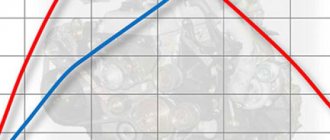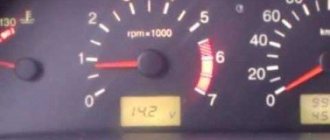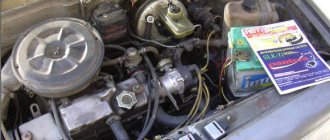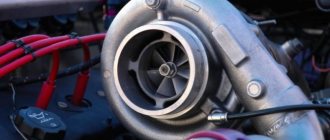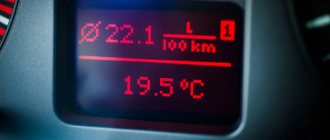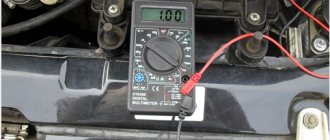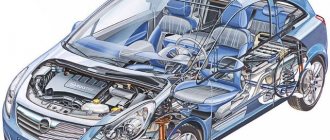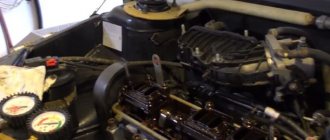VAZ 2110 8 valve injector stalls at idle - causes and solutions
The first VAZ-2110 was produced in 1995. At first it was equipped with a carburetor engine with 8 valves, and then only injection engines began to be installed on it. This model was produced in sedans, hatchbacks, and even station wagons. In 2007, they stopped being produced in Tolyatti, but began to be produced in Ukraine.
If a car suddenly stalls, it is always dangerous. It’s better not to allow this to happen, but if this has already happened, you need to look for the problem and solve it. In order to understand why the VAZ-2110 does not move without the help of car service specialists and wasting money, you need to have at least a little idea of which unit you need to look into, which sensors you need to check. There are many special thematic forums on the Internet where people discuss their cars and give each other advice on any problems. There you can find answers to your questions, and on YouTube you can also see it clearly.
Adjusting idle speed on injection engines
Work on adjusting idle speed on VAZ 2110 injection engines takes place according to the following scenario. In the “VAZ 2110 injector idle speed” system, to optimize the crankshaft rotation speed, an Idle Speed Controller for the RXX brand engine, nomenclature designation 2112-1148300, is used.
This integral fuel system component includes a stepper motor and a valve integrated into the throttle body's air flow bypass. If the number of idle revolutions changes, then the working body of the valve (moving rod), at the command of the electronic control unit, changes its physical parameters along the length.
Checking the serviceability and replacing in case of failure of the idle speed sensor VAZ 2110
The sensor, also known as the idle speed regulator on the VAZ injector, is designed to monitor the stability of the engine. Besides the fact that no one will be happy if the engine floats when the idle speed is turned on, or even stalls, there is another reason why this regulator should work without failures.
This is the need to warm up the engine in cold weather. Although it is generally accepted that if an injector is installed on a car, then the engine does not need to warm up, this is a false opinion, and it is better not to “rip” the engine, but first let it run a little without increasing the speed.
Why might there be high idle speed?
One of the main reasons may be the failure of the IAC, which is responsible for adjusting the engine speed at idle. If the sensor malfunctions, the speed can “float”, rise and fall spontaneously. If the sensor completely fails, the car may simply stall at idle.
Also, increased speeds can be caused by a malfunction of the throttle position sensor (TPS). Over time, moisture gets under the sensor, which leads to the formation of oxide and rust on the regulator rod. To check this, you need to unscrew the sensor and carefully inspect it and the rod. If rust is found on them, they should be treated with penetrating lubricant or WD 40.
As a rule, the problem of increased speed on the VAZ 2110-12 lies precisely in these two sensors. Therefore, first of all, you need to pay attention to them.
VAZ 2110 stalls at idle
Possible reasons for the VAZ 2110 engine stopping at idle
Let's look at one of the common problems for the VAZ 2110 car. This is a Russian-made sedan, usually with a 1600 cc engine and a 5-speed gearbox.
It often happens that when stopping in neutral gear, the tachometer drops the revolutions to 500, and then the readings become standard - 800-900 rpm. After some time, the car begins to stall altogether.
The first thing car enthusiasts do in such a situation is to decide that the problem is that the injectors are dirty and cannot spray fuel as expected. This can happen due to many impurities in gasoline, the quality of which has recently left much to be desired. If the assumption is correct, then the control unit, receiving a signal from the injectors, increases the amount of fuel supplied, which can cause the engine to stop. If after cleaning the injectors the picture does not change, and the car continues to stall when braking at traffic lights and pedestrian crossings, another reason should be considered.
Another “troublemaker” can be the idle speed sensor. You should just replace it and see how the car behaves. If you don’t want to spend money on a new sensor without making sure that the old one is faulty, just ask the lucky owner of a working car for half a day. “Tens” remains a popular model and I think you can borrow this sensor from someone you know. If the experiment showed that the problem is not at all with the idle speed sensor, then you should contact computer diagnostics.
VAZ 2110, 11, 12. Why does the idle speed disappear?
Hello. Today I continue a series of articles about engine management system malfunctions associated with injection wiring problems. Using the example of cars of the VAZ 2110, 11, 12 family.
Models VAZ 2110, 11, 12 are frequent guests in car service centers, because... the years take their toll. The cause of breakdowns associated with the engine management system is often injection wiring.
The following problem arises: on a warm engine, when the fan turns on at idle, the speed starts to rise to 600-800 rpm or the engine may stall completely.
When checking with diagnostic equipment, the use of actuator controls is very informative. With the ignition on and the engine off, forcefully turn on the fan in the diagnostic program menu. At the moment of switching on, the voltage drop in the ADC channel of the mass air flow sensor occurs. The voltage drops from 0.996 Volts to 0.967 Volts (in my case, otherwise the signal can drop even lower).
Checking the serviceability of the throttle position sensor (TPS)
Our problem may be caused by a faulty DPSD.
But it is this sensor that is tested last, when everything has been tried and tested. But in vain, it is easy to test, you can save a lot of time and money if you check this sensor. How to do this: Having found out that the sensor is faulty, you should change it. On the VAZ-2110, 2 types of DPZD are installed - film-resistive and non-contact. The first is designed for 55 thousand mileage, the second is unlimited, but much more expensive than the first.
Well, dear friends, we have presented some tips for servicing your car yourself. I hope you find them useful.
Source
How to adjust idle speed on an injector
Signs of a malfunctioning idle speed in a car are: floating engine speed, when the gear is engaged in neutral, the engine stalls, when the engine is hot, the engine speed is high, when the engine is cold, the engine speed is low. The idle speed must be adjusted by a computer that takes into account the readings of several sensors in the car. I would like to emphasize that the computer regulates the idle speed on injection engines. If you have a carburetor engine, then you can adjust the idle speed without a computer.
Turn off the main power supply. Remember that the regulator is an important component and executive organ of the car engine. If it malfunctions, the “injector malfunction” lamp on the dashboard will not light up. The regulator is presented in the form of an electric motor with a conical needle. It is located on the throttle body. If you wish, you can entrust this type of work to a specialist.
Let's get down to work. First we need to remove the regulator. IT is secured to the throttle body with two screws. Now we need to rinse the regulator bore and blow it with compressed air. This can be done using a compressor or a conventional pump. Carefully disassemble the regulator. It is very important not to damage the regulator winding. Pay attention to the tapered needle and guide sleeve. If the cone needle rotates freely with clearance, the bushing should be replaced with a new one. Also note that the conical needle must be without significant damage.
It is also worth checking the integrity of the pressure spring. Use a special measuring device to check the integrity of the regulator winding. Measure the distance from the cone needle to the body. The distance should be no more and no less than 23 mm (2.3 cm). If the distance differs from this, it is worth replacing the conical needle with a new one. Before assembling the regulator, check the integrity of its windings. Now install the idle air control valve into the throttle valve seat. Connect the control plug. Try starting the engine and testing it in different modes.
Replacing DXX
It happens that the idle speed of a VAZ 2110 floats, and the reason for this is the incorrect operation of the XX sensor due to oxidation of the internal components of the product and the formation of rust on them.
Replacing a part such as an idle speed sensor is usually not difficult even for inexperienced car enthusiasts and is carried out according to the following scenario:
- Remove the ground terminal from the battery.
- Having pressed the plastic latch away from the part, disconnect the wire block and 2 fastening screws.
- Remove the XX sensor from the throttle body.
- Installation of the product must be carried out in reverse order.
- Preliminarily clean the throttle air duct together with the laying surface of the seal ring.
- Wipe it with oil before installation and check for signs of wear.
We are looking for the reason why the idle speed on the VAZ 2110 is floating
The first thing I recommend paying attention to is the mass air flow sensor (MAF or flow meter).
Read how to check the mass air flow sensor here. Diagnostics of malfunctions of the mass air flow sensor of the VAZ 2110. The second “suspect” is usually the idle air regulator (IAC), if after checking the flow meter you did not find anything, check the idle air regulator (IAC). After this, inspect the wiring of the speed sensor (DS). Read how to check and replace the speed sensor (DS) here. The next sensor that can cause floating idle speed is the crankshaft position sensor (CPS). The sensor itself is unlikely to have failed; most likely the reason is in the wiring or chip. If you don’t find anything strange in the wiring, check the DPKV crankshaft position sensor. The throttle assembly can also often affect the idle speed, so the TPS (throttle position sensor) will not be superfluous, as well as the throttle valve itself, it may need cleaning. Plugs, high-voltage wires and the ignition module can cause problems with idle, so first check the high-voltage wires, and then the spark plugs.
Engine idle speed fluctuates often due to a faulty idle speed solenoid valve. To test this valve, remove power from it, then turn on the ignition and connect the power wire to the contact on the valve. In this case, you should hear a distinct click; if this does not happen, connect the wires to the contact that is connected to the “positive” terminal of the battery. Even if you do not hear a click, you can conclude that the valve is faulty. If there is a click, but the engine speed fluctuates as before, check its jet.
Among other things, check the condition of the air filter; it may need to be replaced. Make sure that the ignition system is working properly and that there are no air leaks.
If the tips and recommendations described above do not produce results or you are not sure that you can cope with such work, seek help from professionals; specialists will quickly and accurately determine the source of the malfunction and stabilize the floating idle speed of the engine.
Thank you for your attention, I will be glad if it helps someone. If you know other reasons or methods of checking, you can safely add to this article using the comment form
Until we meet again, take care of yourself and your car.
Let's sum it up
There are dozens of types of breakdowns that lead to a sharp or gradual drop in speed on carburetor cars. But the question is that the equipment turns out to be quite demanding in terms of maintenance, so all the reasons have to be eliminated together. If you always encounter such a problem, it means that this is a specific operation of the carburetor installed in your car. Most likely, only replacing the device will help get rid of the troubles. If the problem only occurred a few times, you should try servicing the fuel system, replacing the filter and installing a new carburetor repair kit.
Cars with this type of injection are gradually giving way to injection systems. They are more reliable, more economical, last longer and do not cause such troubles as carburetors. Of course, there are also many subtleties and features in direct injection that should be kept in mind. But changing a carburetor to an injector is too labor-intensive and expensive. It is better to properly maintain your equipment and ensure its normal operation. Even with very good service, after 1-2 years you will have to go to the service again. Have you ever experienced a sharp drop in engine speed when warming up?
Didn't find the information you are looking for? on our forum.
